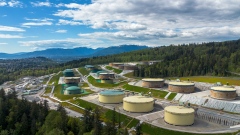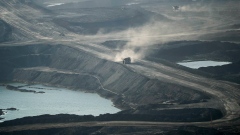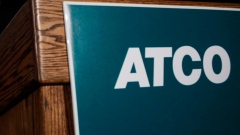Apr 24, 2023
Canadian climate policy is competitive relative to the U.S.: TD Bank
, BNN Bloomberg
I think the U.S. is running out of money to spend on energy subsidies: U.S. policy strategist
Spending on Canada’s clean energy transition over the past few years has kept pace with the U.S. on a relative basis, according to a report from TD Economics on Monday.
Canada has spent around $139 billion on its various energy transition measures since it released its Fiscal 2021 budget, according to a report authored by Francis Fong, a managing director and senior economist at TD Economics. This level of spending accounts for about five per cent of nominal gross domestic product (GDP), according to Fong.
Canada’s spending in this area “compares favourably” to the U.S., Fong said, which is estimated to spend US$393 billion through its Inflation Reduction Act or about 1.5 per cent of nominal GDP.
“The higher proportional outlays are likely a necessity for a small, open economy that needs to punch above its weight in order to compete for similar foreign investments relative to industrial powerhouses… that historically are able to attract more capital and form centers of innovation,” Fong said in the report.
The report additionally finds that since the Canadian government began to accelerate its climate policy framework in 2021, it has been closely behind the U.S. in key areas. Since 2021, electric vehicle battery production announcements have totalled US$52 billion in the U.S., compared to $17.4 billion in Canada.
“Going forward, Canada’s competitiveness will be dependent on maintaining this investment momentum, but also in the development of lesser touched areas, such as skills development and expediting project assessments,” Fong said in the report.
In Canada’s most recent fiscal budget released last month, the federal government stated that the Inflation Reduction Act in the U.S. presents a “major challenge” to the nation’s ability to compete in key areas of the clean economy.
Despite concerns from the federal government regarding the U.S. legislation, Fong said that Canada will also benefit from the Inflation Reduction Act due to the concessions extended to it and Mexico regarding domestic content requirements.
“In other words, the IRA [Inflation Reduction Act] represents just as much an opportunity for Canada as it does a challenge,” Fong said.
“And the maturation of climate policy in Canada is reflecting areas where the government sees opportunities that ought to be supported, or where obstacles require mindful navigation.”
‘APPLES-TO-ORANGES’
The direct contrast between the U.S. and Canada represents an “apples-to-oranges comparison,” Fong said.
He said that while Canada’s clean energy transition framework includes a “wider array” of funding tools across different sectors, the U.S. mostly implements subsidies with “relatively limited direct funding.”







